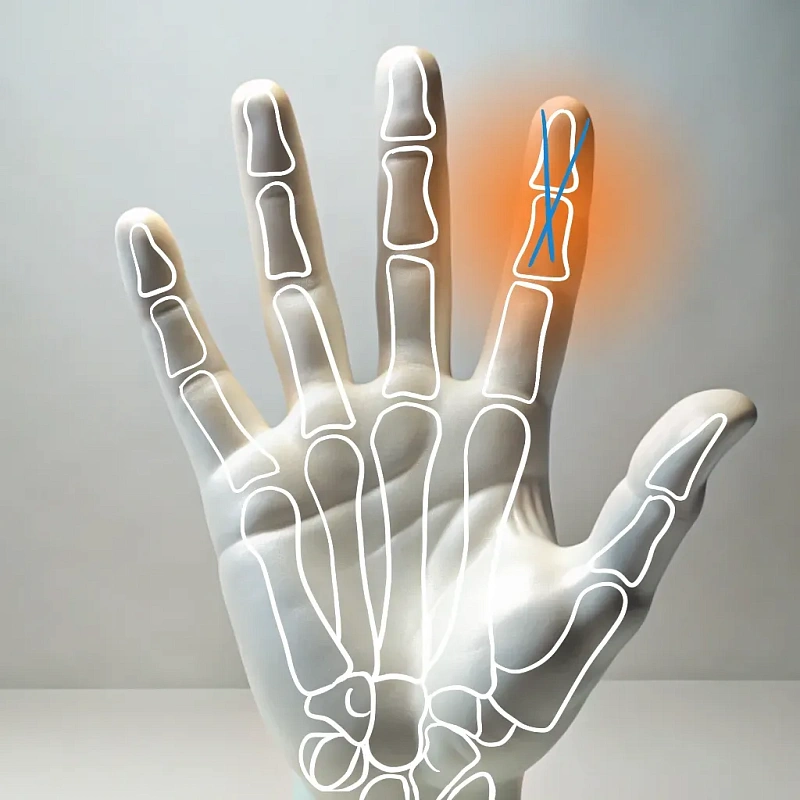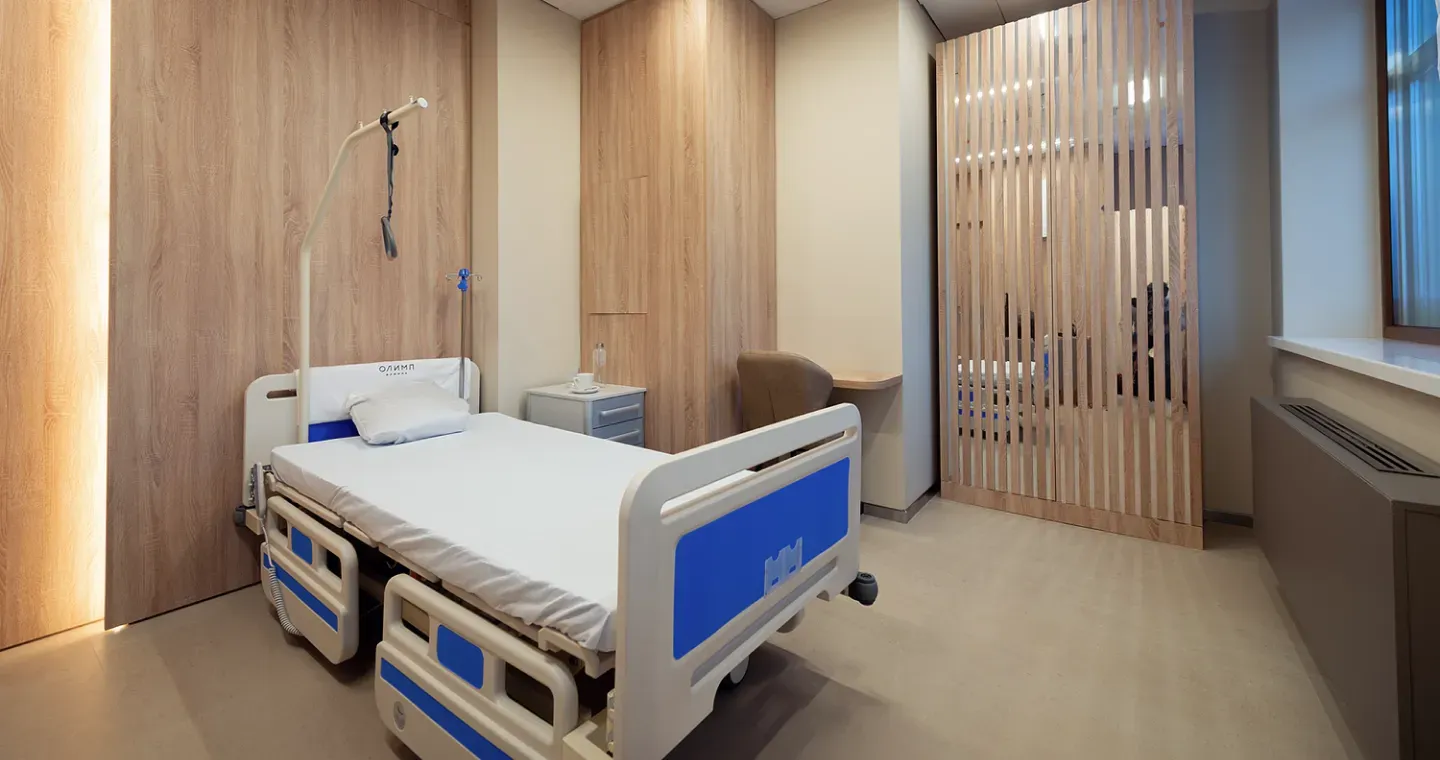Arthrodesis of the joints of the fingers of the hand
The destruction of the joints of the fingers of the hand is accompanied by pronounced pain and impaired functions. Arthrodesis is a surgical intervention in which the affected joint is completely immobilized, which relieves pain and progression of inflammation.

Surgical intervention stabilizes the operated joint, but it loses motor function due to the fact that neighboring bones are fused.
Clinical blood and urine tests X-ray of the wrist joint MRI or CT scan to assess the condition of bones and joints Consultation with a therapist and an anesthesiologist
The surgeon will make small incisions above the finger joints and remove deformed or cartilaginous parts of the joint. Next, the joints are fixed in the correct position using plates, screws or other medical devices. After that, the wound is sutured in layers.
Surgical instruments for resection of articular surfaces Clamps, such as screws, plates or rods, for bone fusion X-ray equipment
After surgery, pain and swelling may appear in the area of the hand. The doctor will prescribe analgesics and possibly anti-inflammatory drugs. A rehabilitologist will prescribe a set of procedures to restore joint and muscle function. The complex may include physiotherapy and physical therapy.
Benefits
Long-term results
Healthy condition of joints for many years to come
Improving joint functionality
Arthrodesis allows you to maintain a certain degree of functionality of the finger, which is important for performing everyday tasks.
Prevention of disease progression
Arthrodesis can stop the progression of the disease, especially in arthritis, preventing further destruction of the joints.
Consultation
At the consultation, the doctor will assess the condition of your hand, determine the causes of pain. The doctor may prescribe X-rays, MRI or other studies to study the condition of the joints in more detail.

Operation
The surgeon will make small incisions over the finger joints and remove the damaged articular surfaces. The joints are fixed in the correct position using plates, screws or other medical devices.

Rehabilitation
After surgery, you may experience pain and swelling in the area of the hand. The doctor will prescribe you analgesics and possibly anti-inflammatory drugs. You may be recommended physical therapy to restore mobility in the hand. After surgery, you will need to visit a doctor regularly to monitor and remove stitches or splints.

Frequently Asked Questions
In which cases is arthrodesis of the joints of the fingers of the hand indicated?
How long does it take to recover from arthrodesis?
What alternatives are there for arthrodesis?
Didn't find an answer to your question?
You can describe your problem in detail and ask a question to the doctor. He will answer you and help you find a solution
Врачи
Смотреть всех врачейCandidate of Medical Sciences. Hand Surgeon, Orthopedic Trauma Surgeon, Microsurgeon. Head of the Hand and Microsurgery Center. Member of the Interregional Public Organization “Hand Surgery Society”.
Orthopedic Trauma Surgeon
Hand Surgeon, Orthopedic Trauma Surgeon, Plastic Surgeon, Microsurgeon. Senior Physician of the Hand and Microsurgery Center. Member of the Interregional Public Organization “Hand Surgery Society”.
Doctor of Medical Sciences, Professor. Hand surgeon, orthopedic trauma surgeon, plastic surgeon, microsurgeon. Scientific Director of the Hand and Microsurgery Center. Chairman of the Interregional Public Organization “Hand Surgery Society”
Hand Surgeon, Plastic Surgeon, Microsurgeon. Senior Physician of the Hand and Microsurgery Center.
Orthopedic trauma physician, hand surgeon, microsurgeon
Indications and contraindications
Indications
Chronic diseases of the joints of the hand
Pain in the joints of the hands
Infectious processes in the brush area
Boils, carbunks, phlegmon brushes
The consequences of the injuries of the brush
Damage to tendons, bones, nerves of the hand
Expected effect
Pain Elimination
The main advantage of arthrodesis is the elimination of pain associated with damaged or inflamed joints. After the procedure, patients often feel significant relief.
Correct joint position
Arthrodesis fixes the joints in the correct position, which improves stability and prevents further damage.
Correction of deformations
If the joints have been deformed, arthrodesis can help restore the normal shape of the fingers.
Similar referral activities
Arthroscopy of the ankle joint
Ankle arthroscopy is a minimally invasive surgical procedure used to diagnose and treat various diseases and injuries of the ankle joint.
Arthroscopy of the knee joint
Knee arthroscopy is a minimally invasive surgical procedure for the diagnosis and treatment of injuries and diseases of the knee joint. It allows examining the joint for damage and eliminating the identified defects.
Arthroscopy of the elbow joint
Arthroscopy of the elbow joint is a minimally invasive surgical intervention that allows for accurate diagnosis and simultaneous treatment of joint injuries.
Arthroscopic revision of the cystic joint
The condition of the wrist joints determines the functioning of the hand. Arthroscopic revision is a minimally invasive diagnostic procedure that assesses the condition of the joint tissues, which is necessary for planning subsequent treatment.
Arthroscopy of the shoulder joint
Arthroscopy of the shoulder joint is a minimally invasive surgical procedure designed to diagnose and treat various diseases and injuries of the shoulder joint.
Hip arthroscopy
Hip arthroscopy is a minimally invasive surgical procedure that allows the examination and treatment of hip joint pathologies through small incisions.






